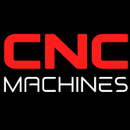The Evolution of CNC Machining in the Automotive Industry

The Evolution of CNC Machining in the Automotive Industry
Computer Numerical Control (CNC) machining has been instrumental in transforming the automotive industry, enabling precision, efficiency, and innovation in vehicle manufacturing. This article traces the development of CNC machining within the automotive sector, highlighting significant milestones and current trends that continue to shape the future of automotive production.
Early Adoption: The 1950s–1970s
The origins of CNC machining date back to the late 1940s and early 1950s, with the development of the first CNC machines credited to pioneers like James Parsons. These early machines utilized punched cards and magnetic tapes to control machining operations, laying the foundation for automated manufacturing processes. In the automotive industry, the adoption of CNC technology began in earnest during the 1960s and 1970s, as manufacturers sought to improve precision and reduce manual labor in producing complex engine components and body parts.
Technological Advancements: The 1980s–1990s
The 1980s and 1990s witnessed significant advancements in CNC machining, driven by the integration of computer-aided design (CAD) and computer-aided manufacturing (CAM) systems. These innovations allowed for more complex and precise machining operations, enabling automotive manufacturers to produce intricate parts with higher efficiency and consistency. During this period, the introduction of multi-axis CNC machines further enhanced capabilities, allowing for the simultaneous movement of tools along multiple axes. This development was particularly beneficial in manufacturing components with complex geometries, such as transmission systems and suspension parts.
Integration into Mass Production: The 2000s
By the early 2000s, CNC machining had become integral to mass production in the automotive industry. Manufacturers leveraged CNC technology to achieve higher production volumes while maintaining stringent quality standards. The automation of machining processes reduced cycle times and minimized human error, leading to cost savings and improved product reliability. Additionally, the adoption of CNC machining facilitated just-in-time manufacturing, allowing automotive companies to respond swiftly to market demands and reduce inventory costs.
Current Trends: 2020s and Beyond
In recent years, several trends have emerged in CNC machining within the automotive sector:
- Automation and Robotics: The integration of robotics with CNC machines has enhanced automation, enabling continuous operation and increased productivity.
- Advanced Materials: The use of lightweight and high-strength materials, such as carbon fiber composites and advanced alloys, has necessitated the development of specialized CNC machining techniques to handle these materials effectively.
- Electric Vehicle (EV) Manufacturing: The rise of EVs has introduced new challenges and opportunities for CNC machining, including the production of battery components, electric motors, and power electronics housings.
- Sustainability: Environmental considerations have led to the adoption of energy-efficient CNC machines and processes that minimize waste and reduce the carbon footprint of manufacturing operations.
Conclusion
The evolution of CNC machining has been pivotal in advancing the automotive industry, from improving manufacturing precision to enabling the production of complex components for modern vehicles. As technology continues to evolve, CNC machining will remain at the forefront of automotive innovation, driving efficiency, quality, and sustainability in vehicle production.


